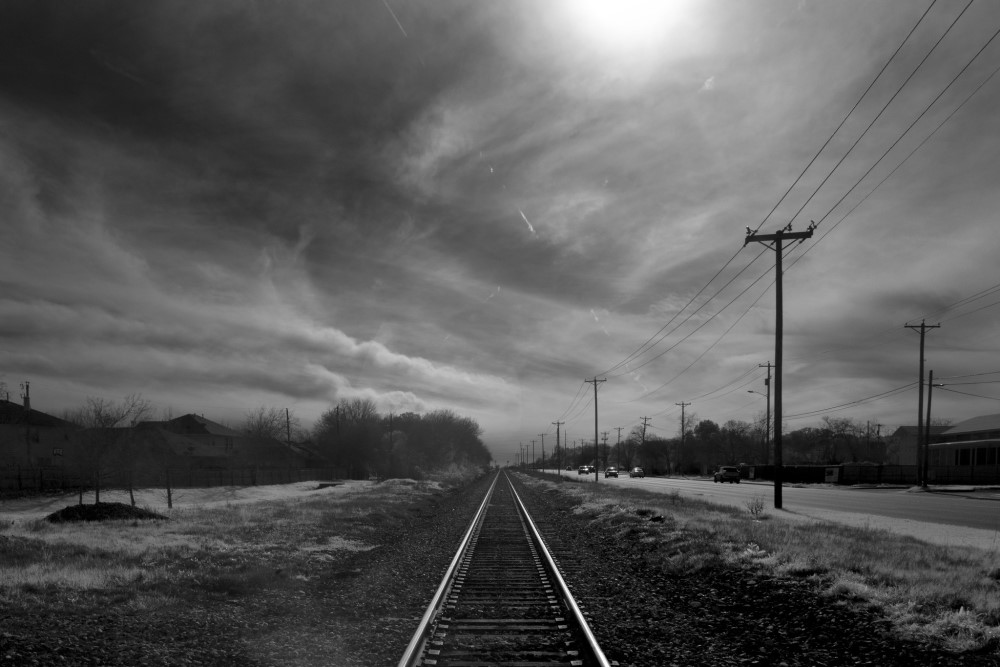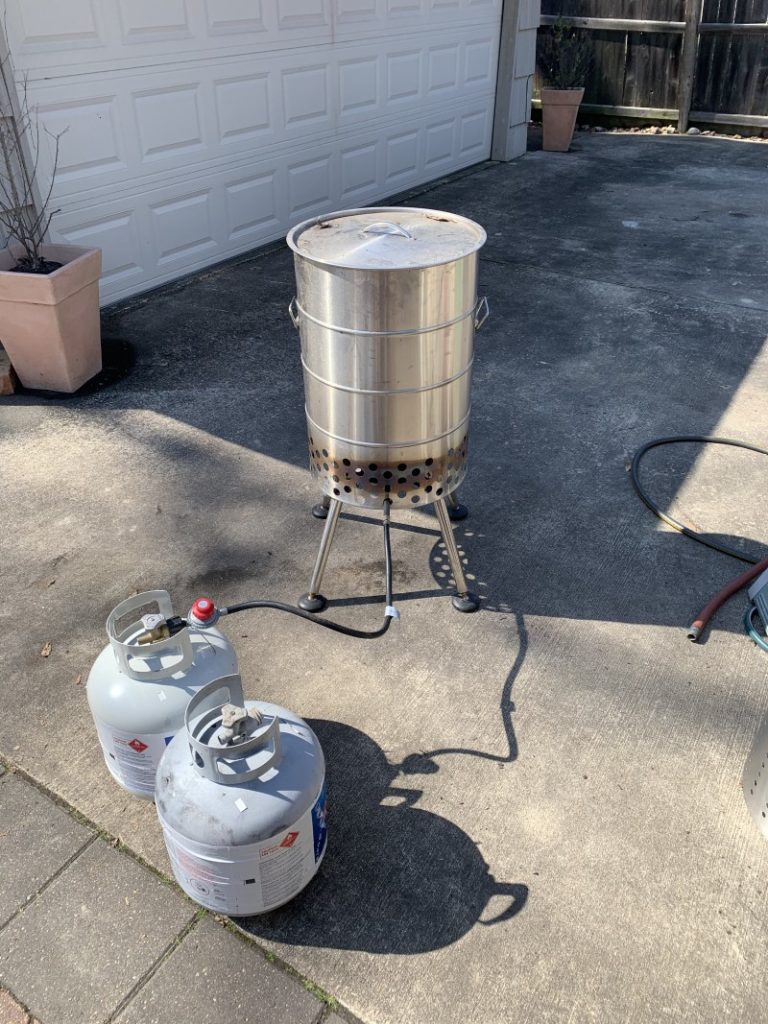
Posted on 02/23/2021 9:04:42 AM PST by Kaslin

Thanks to experience with numerous hurricanes, we were prepared for the Texas power outage and no one slept in the cold at our house. When you are prepared, three days is not that bad.
I have lived along the Gulf Coast my entire life, mostly in the Houston Area. I lived and worked in Louisiana when Hurricanes Katrina, Rita, and Gustav slammed into South Louisiana and have learned from my successes and failures and those of my friends.
After moving back home to Texas and a long period of relatively quiet storm activity, Hurricane Harvey was a test of different beast until one of the coldest winters in Texas history. Every storm has taught me that you need to have a plan to survive on your own or as a group for two weeks. I’ve also learned you can spend as little as $200 to survive with no city water, no power, and no heat for three days in zero-degree weather.
Every storm, and the periods afterward, have taught me something new to apply to my preparations for the next one. I’ve found that simple is better, something is going to happen that you did not plan for, and you or your friend group must solve your problems instead of waiting for someone else to do it for you.
Fresh out of college and with no preparation when Hurricane Katrina hit Louisiana, I evacuated back to Texas. I learned that you should have a plan to evacuate for hurricanes and arrive back home with a plan to survive for weeks.
When I arrived back in Louisiana for work, some areas recovered quickly and others were figuring out they were going to have no power, water, or services for the long haul. A common generator theft resulted in the unsuspecting homeowner waking up to no power and a lawnmower running in their backyard to replicate the white noise of the generator while its owners were sleeping.
Lessons: Be prepared for long-term survival and buy a lock for the generator.
After the hurricane passed, I arrived in Houma, Louisiana after evacuating while carrying all my preparations to survive for two weeks, some of which I still have today.
One thing I was not ready for was the lack of gasoline and communication systems to support credit card transactions. My lessons learned were to have cash and keep more than ten gas cans (I currently have 13).
Owning simple, shelf-stable foods was a big advantage when trying to repair our home after storm damage with no power. Our friend group pooled resources and repaired each other’s fences and roofs after the storm, saving so much heartache and money.
Lessons: Cash and gas make good friends.
Even though we did not lose power with Hurricane Harvey in 2017, I was not prepared to wake up to water in the street at the time. Many people woke up with two options: evacuate via boat or wade through water.
I had purchased a water transfer pump before the storm, which saved an entire cul-de-sac from flooding due to a stopped-up storm drain. I learned rain gear does not keep you dry when walking in water.
As part of a small group that was doing high-water rescues all over Houston, I learned to buy dry bags and waterproof waders with booties in them as well as personal flotation devices. You never know when you will have to walk out of your house in hard rain, and you will be thankful that you are dry in that moment. Also, buy flood insurance. Many, many people learned that very expensive lesson during Harvey.
Lessons: Be prepared to evacuate your home in the rain. Know where high ground is located and how you are going to get there. Buy flood insurance.
By the time COVID-19 hit, my wife and I had started to focus on shelf-stable foods and a full pantry. When the crunch on water, food, and toilet paper hit, we saw the need to own more-significant water filtration and storage because water bottles are a temporary solution and people were waiting in lines for hours for these basic necessities.
We purchased a Lifestraw Pitcher and then the Lifestraw Community filter so we would not have to run out to buy water, but could store water in five-gallon cans and have the ability to filter rainwater. In Houston, a major water main broke, shutting off water to most of the city, amplifying a panic that was already slowly building in the early days of COVID-19.
Lessons: Water filtration and toilet paper are highly valuable resources.
Due to the storm, our family, which includes an 18-month-old and a newborn, were out of power at 2:30 a.m. on Feb. 14. We were out of power with snow and freezing temperatures for 41 hours before the power came on for eight, then was off for 18 hours, before staying on—for now. The water pressure went to a trickle for us after the first day and much sooner than that for other folks.
We were prepared for the power outage and no one slept in the cold at our house. When you are prepared to be self-sufficient for two weeks, three days is not that bad. Here is what we did, and then I will explain how you can do it for far less.
Generator: We purchased a Winco HPS12000HE Tri-Fuel Generator in 2016 after a bunch of research. Generators are tricky in that fuel demand can be an issue in a disaster area if it is too big, but too small of a generator limits what you can operate in your home. As it was, our Winco burned one gallon of gas per hour, and in a prolonged power-outage we could have swapped to natural gas.
A carbon monoxide monitor is a necessity with a generator. Also, hire an electrician to connect your generator to your house or show you how. It is a simple installation and it will make your life so much easier versus cords everywhere in your home.
Water: We had already filled one of the bathtubs before the power went out, an old hurricane preparation trick, so we could maintain functioning toilets. It quickly became clear we would need water for the long term.
Melting snow and ice on the roof during the day was a significant resource, and we just needed to collect it. I emptied six IRIS 82-quart totes and started stationing them on downspouts of the gutters and other places. In 24 hours, we had collected 120 gallons of water, of which we used a small portion for flushing toilets and bath water.
In the South, crawfish pots are fairly commonplace and we have one for our annual crawfish boil. We used the crawfish pot to boil the water and then used it for baths and rinsing dishes. We used one tote for scrubbing dishes and the sink with boiled rain water for rinsing.


I have a ~22 year old pull-start generator I’m going to replace later next year with something like that.
They used to snicker and laugh at “survivalists”.
Now neighbors come over sheepishly and try to call in old favors like lending a lawn mower that time two years ago, old pal, old buddy.
Lifesaver water purification
https://iconlifesaver.com/
Created because inventor saw people wading through undrinkable water after hurricane Katrina
I love this product
I back feed my gen set through the electric dryer outlet. I get 220vAC and 30 amp service.
bfl
Won't be much of that coming from Texas for a very long time, I'm guessing. This one only lasted a week or so, thank God, and a lot of eyes got opened.
Stick 200 in pocket, wrap in blanket. Put trash bag over feet. Find some water and drink it before you wrap up. Take a nap.
I would say the $4,000 Winco HPS12000HE Tri-Fuel Generator puts you a little over the $200 budget :)
“How To Survive For Three Days With No Water Or Power On $200” ........ First, buy a $4000 generator. https://www.electricgeneratorsdirect.com/Winco-HPS12000HE-Portable-Generator/p1187.html
We have a wood burning stove. Lots of water. We’re good.
Here in DFW we had long hours of power outages, short restorations like 8 hours off/1 hour on cycling for 3 days. No backup generator— I guess need one. However I survived and even went walking in the snowy park during the worst 3 days. I’m 64 single and while it sucked without power there’s no way I’m gonna get hypothermia inside a house with layers of blankets.
Spent a whole lotta time in bed for warmth and boredom too.
Glad I turned off the water main and opened faucets before the deep freeze hit. All the piping was spared thank God.
That’s OK if you’ve got a proper 4-wire dryer outlet, and it isn’t too much hassle getting to the outlet.
I’ve got a 30A infeed on the side of the house and a 10ga SO cord with a locking plug (generator side) and receptacle (infeed side).
>>Backordered - Estimated Availability August 05, 2021
And I meant this when I typed next earlier. I figure I buy a replacement generator late Summer / early Fall, and this is why.
Those Texans bought a LOT of generators.
“ I back feed my gen set through the electric dryer outlet. I get 220vAC and 30 amp service.”
Dangerous, illegal, and stupid.
L
Survivalists were laughed at; called them hoarders.
Just twist the white and green together and you got three wire connection. I just ran my house gen set that way for 2 straight days.
Good piece of kit.I picked up the 9.3KW version on sale at Costco for $600 a few years ago. Built an enclosed covered platform for it with a lockable swing-out front panel. Plenty of gaps for ventilation. The platform puts the generator about 2.5 feet above ground, high enough to avoid most snow events.
In the 90s we .out our power for 1 1/2 weeks I. The dead of winter, tells were below 0 the whole time. It sicked, but we got through it fine, and even had re,atives visitation when it happened. Of course we had a wood stove which helped a lot to boil water, cook on, etc. But the folks in Texas I’m sure have gas stoves in many instances?
Disclaimer: Opinions posted on Free Republic are those of the individual posters and do not necessarily represent the opinion of Free Republic or its management. All materials posted herein are protected by copyright law and the exemption for fair use of copyrighted works.